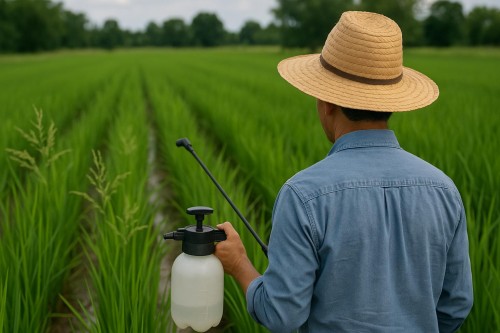
Smart fungicide use boosts crop resilience through timing, strategy, and tech for disease-free harvests.
Fungi-induced crop diseases are responsible for a large percentage of agricultural losses worldwide. Around 15% of all crops are destroyed annually by fungal infections, which could feed more than 600 million people, according to the International Society for Plant Pathology. That is a significant problem that affects global food security.
Fungicides, when used appropriately, help:
But not all fungicides are created equal. Their effectiveness lies in proper application, selecting the right formulation, and timing them with precision.
Understanding the specific fungal pathogens you’re dealing with is the first step. Some are more aggressive, others more elusive.
Here are a few that frequently impact major crops:
Each fungus has a preferred habitat and season. A smart fungicide strategy must consider regional disease forecasts, field history, and crop susceptibility.
Spraying randomly or reactively is no longer a sustainable approach. The right application strategy involves monitoring, prediction, and precision.
Timing matters more than quantity. For most systemic fungicides, application during early signs of disease—or even just before high-risk conditions—is far more effective than treating full-blown infections.
Key practices for smart fungicide use include:
Efficacy and spectrum are important considerations when choosing a fungicide. For instance, growers frequently purchase Spectrum Azoxystrobin + Tebuconazole SC to tackle numerous foliar diseases in cereals or crops. Fungicide because it provides both systemic and contact control against a variety of fungal diseases. By providing a safety net for crops during critical stages of development, this kind of product lessens the need for repeated spraying rounds and provides comfort in the face of erratic weather.
Fungicides are usually grouped into two major categories based on how they function.
Protective fungicides (contact):
Remain on the plant’s surface, forming a barrier that prevents spores from germinating. They need to be reapplied more frequently and can be washed away by rain.
Curative fungicides (systemic):
Targeting internal fungal growth even after infection, it is absorbed into the plant tissue. When the illness has already infected the crop, these are perfect.
Digital tools now allow farmers to:
Incorporating these tools gives you a clearer picture of where intervention is needed—saving time, money, and chemicals.
“Good decisions in the field start with good vision—whether it’s from your eyes or your drone’s lens.”
When fungicides are overused or misused, resistance develops, making the same treatment less effective over time. This issue is most noticeable with fungicides that have a single site of action, such as strobilurins.
Here’s how to prevent resistance before it’s too late:
The Fungicide Resistance Action Committee provides valuable resources for identifying resistance risks and selecting the most effective rotation strategies, tailored to specific regions and crop types.
© 2024 Crivva - Business Promotion. All rights reserved.